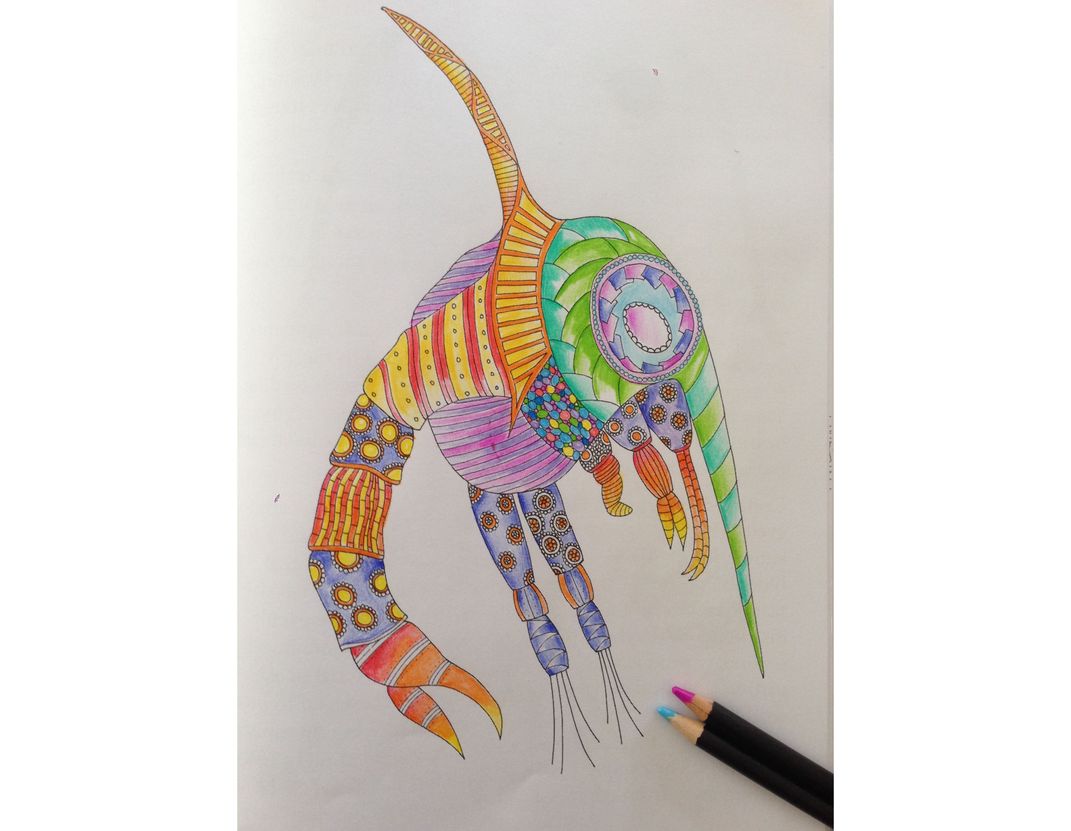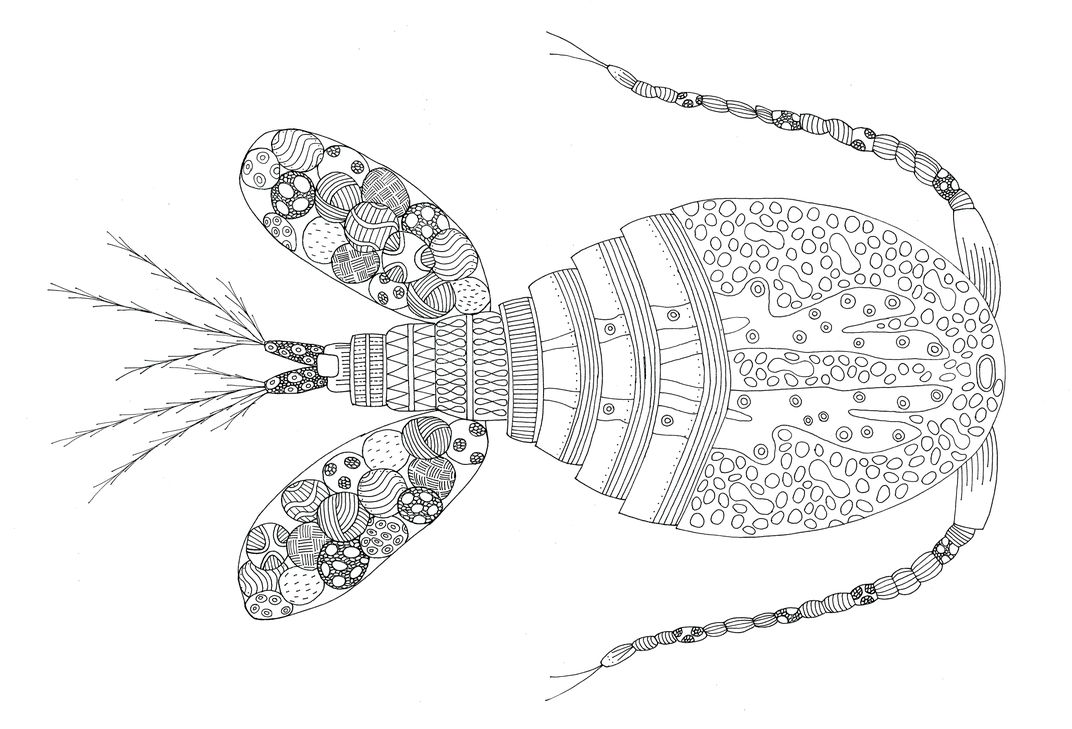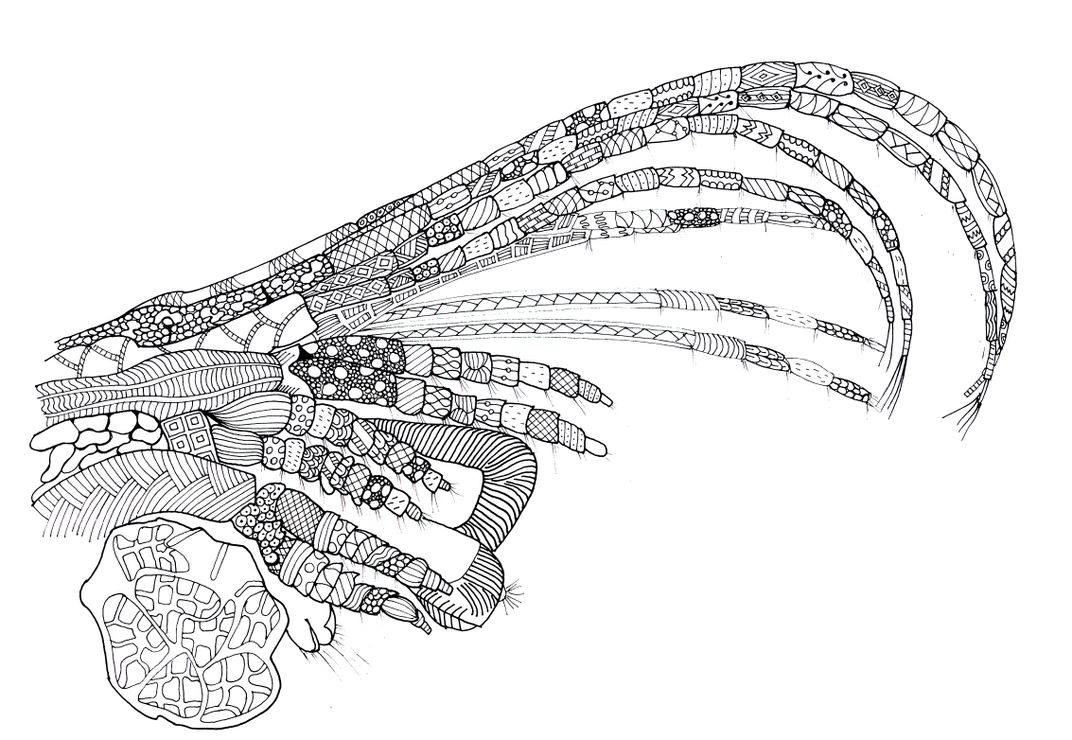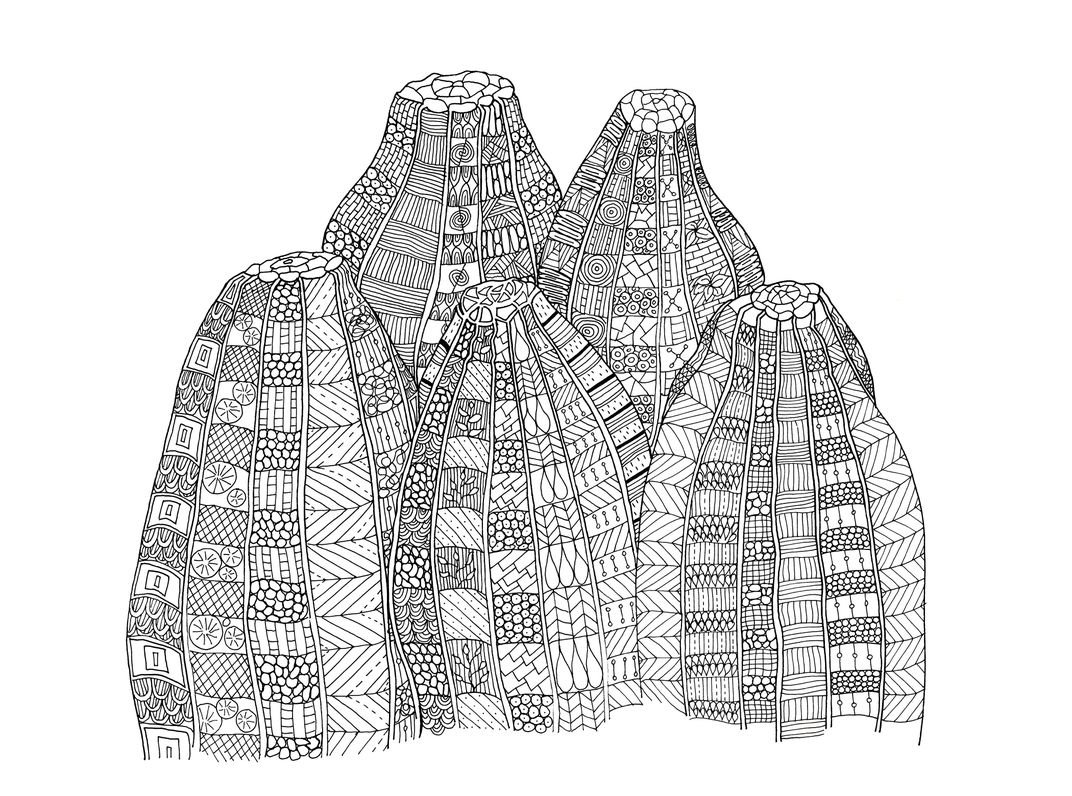These Fanciful Microbes Need Your Coloring Skills
A vast microscopic world writhes around you. Now a coloring book lets you bring wee beasts and beauties to life
Jennifer Delaney isn’t a scientific illustrator by training. She’s a math teacher for Donegal Youthreach in Ireland, working with students who have dropped out of school. She never formally studied art, she’s never been interested in coloring, and her last science class was well over a decade ago. But around two years ago, Delaney decided she wanted to publish a science-themed coloring book.
“Whenever I was growing up I was torn between science and art,” she says. “I didn't really realize that I could marry the two together.”
Years ago, she earned a degree in marine biology from the National University of Ireland Galway. “I still drew plenty at college,” she says. “One of my lecturers said, ‘if you would have spent as much time on your actual written work as your drawing you would do grand.’”
But instead of leaving one her passions behind, she’s managed to combine them with the publication of her microbe coloring book for adults this month. Fifty different critters from all kingdoms of life grace the pages of Life Under the Lens. Delaney has given each a scientifically accurate outline, but also added in her own artistic embellishments and detailed patterns—concentric circles swirl over a daphnia’s developing embryo, waves crash through the ridge of a radiolarian, and spots dance across the delicate frame of a foraminifera.
Her hope is that the book will inspire people of all ages to love the hidden world all around and within us. And while her artistic subjects may be small, that ambition is pretty grand.
How did this book come to be?
I started over two years ago, before the adult coloring craze really took off. When I was researching coloring books, most were either city guides or children's coloring books. So I just started thinking of different possibilities. The idea of basing it on microscopic images actually came from social media. Both me and my husband are on Twitter. And my husband follows a feed about science that often posts microscopic images.
I just decided, that’s it. I’m doing microscopic stuff.
Could you tell me a bit about the process of making the book?
It took me a very long time. I have a job and four children now. I made it through a pregnancy while working on the book. I drew in my spare time at night after my children went to bed, and didn't go near the TV for a long time. When I started actually drawing, I wondered, “Can I do this? Can I actually make something that looks nice?” Coloring book art is tidy and I'm not necessarily a tidy drawer. A line would go wrong with my pen and I would have to redo the whole image. I used layout paper, which is transparent. You can draw out a sketch and then you put the next layer on top. That way I can draw a tidier outline.
Did you draw while looking at your subjects with a microscope?
I would have loved looking at things down a microscope, but I didn’t have access. The nearest university would be maybe an hour and a half away in Belfast. So a lot of the images I used were from the Internet. I’d always have a couple of them open so that my finished image was not exactly like anybody else’s. I had to make each of them my own.
Twitter seems to play a pretty big role in the creation of the book, from conception to marketing. Could you tell me a bit more?
I knew that I needed to get the word out there. So just after Christmas 2015, I started a second Twitter account. But I also didn't want anybody to know I was making the book. I didn't even tell my mother. I suppose it was because I thought maybe it won't happen and then they'd have to share in my disappointment. So I had about two years of being "anonymous" on Twitter, sharing images I was working on for the book. There wasn’t one person who followed me or that I followed that I knew. But because of this, I wasn't self-conscious of what people I knew would think of me, which was a lovely freedom.
Through this account, I also became aware of a whole community of artists out there sharing each other’s work and making a living from sci-art. Even though they are miles apart, they're all promoting each other and helping each other—and they do that for me, too.
These pictures are very different from most scientific illustrations, with lots of different patterns throughout each organism. How did you decide on the style of your work?
After I started creating the book, I contacted Millie Marotta [a UK artist who draws intricate nature-based illustrations]. I think she’s brilliant. She got back to me and wrote lovely words. She was very encouraging. She says, “Don’t look at anything else. If you do, your will just blend in with everybody else’s work. Develop your own style.” Granted, I already had some idea of what was out there at that stage. But when I got stuck, [instead of looking online] I tended to just flap back over my drawings [for inspiration]. You'll find I use a lot of circles, a lot of stripes. The patterning is often related to the organism.
Everything I did brought me back to Ernst Haeckel [the well-known German naturalist and biologist known for his intricate scientific illustrations]. But when you look at the likes of his art, it’s realistic, but it’s also fanciful. I thought, “He got away with that, so I might get away with it, too.”
Having never done coloring books before, what was the most challenging aspect of making this book?
Putting it all together on a computer—the technical part. It was much more idyllic to sit and draw, even into the wee hours of the night, than to sit in front of a computer. I'm okay with computers, but I did this all on the cheap and I was often doing it with a baby in my arms. Everything I used was free software. So I had to do a lot of learning, a lot of YouTube, a lot of figuring out what everything was.
Who do you hope this book reaches?
The people I really would like to be looking at it are people who have never seen these things before. There are people who have never looked under a microscope and might never look under a microscope. I want to convert people to science and help them learn to appreciate these organisms.
I'm not really into "Oh, save the tiger because it's beautiful." Look at the beauty that's in a wee flea. It's gorgeous and fascinating. If people cared a little bit more about things that weren't so cute, we'd be all living on a better planet.
This interview has been edited and condensed for clarity.
/https://tf-cmsv2-smithsonianmag-media.s3.amazonaws.com/accounts/headshot/Wei-Haas_Maya_Headshot-v2.png)

/https://tf-cmsv2-smithsonianmag-media.s3.amazonaws.com/filer/62/1c/621c773f-5322-4f29-bb23-309c7cf5d7d7/unknown-5_copy.jpeg)




/https://tf-cmsv2-smithsonianmag-media.s3.amazonaws.com/accounts/headshot/Wei-Haas_Maya_Headshot-v2.png)